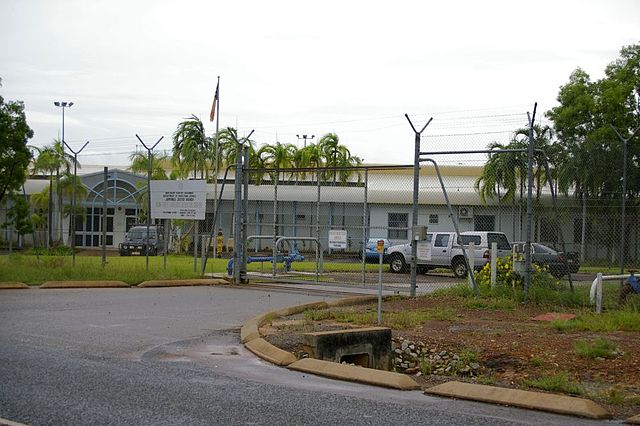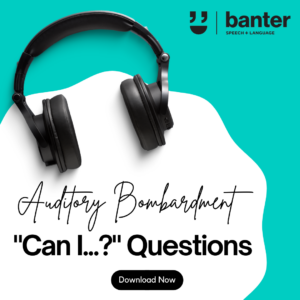How can speech pathologists help youth offenders? A practical framework
For almost 50 years, researchers have observed consistently that youth offenders are much more likely to have communication problems than others. (As we’ve previously discussed, up to 50% of youth offenders have language disorders, compared to around 3-7% for the population in general.)
In Australia, there have been some small, but promising, developments. For example, the Parkville Youth Justice Centre in Melbourne has a full-time speech pathologist at the Parkville College. I know some others in Sydney who are working to get communication supports for young people in court, following the UK model.
But why – given all the evidence – aren’t we treating youth offenders with language disorders across the system?
Lack of money is an obvious reason. But to get system-wide funding, we need:
1. a cohesive framework to plan and deliver treatments; and
2. evidence of effectiveness and value for money.
It’s hard to do this without funded pilot trials. It’s like a young man trying to secure his first job as a waiter. Everywhere he goes, he’s told that experience is essential. But how is he to get experience if no-one will give him a start?
A communication intervention framework for youth justice settings
Associate Professor Pamela Snow and colleagues have recently published a paper proposing a way forward. Adapting a US education policy called “Response to Intervention” (RTI), they propose a tiered framework based on evidence-based principles for working with adolescents in a correctional facility.
4 evidence-based principles for working with youth offenders
- Work with students to determine the purpose of the treatment and give the students some ownership of goals.
- Promote shared responsibility between students and staff to address speech-language needs.
- Counsel students on the consequences of inappropriate communication.
- Promote engagement by giving students success in a safe, supportive environment.
(Source: Sanger et al., 2002.)
Snow’s Framework: 3-levels of support for youth offenders and those working with them
Tier 1 support: Speech pathologists would:
- screen everyone, expecting (based on research evidence) that around 1/2 of the students will have a communication disorder;
- “flag” students with diagnosed needs, e.g. autism, and then assess their communication needs comprehensively;
- help modify the classroom and other places where students will learn to make it easier for students to understand the lessons and to express themselves appropriately;
- train teachers and justice staff about the high incidence of speech-language disorders in youth offender populations, language-learning difficulties, generally, and the link between language disorders and anti-social behaviours;
- promote social language skills (e.g. eye contact, listening, giving and receiving feedback, conversation skills, negotiating, expressing emotions, and assertiveness);
- promote oral language skills (e.g. story telling, and functional vocabulary); and
- use classroom observation tools to help teachers understand the demands of the classroom on students with communication problems (e.g. the Communication Supporting Classrooms Observation Tool, Dockrell et al., 2012).
Tier 2 support: Speech pathologists would:
- work with small groups of students with diagnosed communication disorders targeting language and literacy needs, recognising many youth offenders can “talk the talk”, but not “walk the walk” when it comes to using language appropriately in the real world; and
- adapt tools and tasks designed for younger children to help older students at developmentally appropriate levels (e.g. the START-IN programme, Montgomery & Moore, n.d.).
Tier 3 support: Speech pathologists would:
- provide 1:1 intervention to students with high needs and students who do not respond sufficiently to Tier 1 and 2 supports;
- work with high needs students to identify personalised, meaningful and functional goals, e.g. to attain specific vocational skills;
- instruct individual students directly about specific language and literacy skills; and
- develop hypotheses about, experiment, and then measure outcomes of specific interventions using single-case research methods.
Not perfect
There are very few speech pathologists employed in youth justice settings in Australia. In this context, Snow admits frankly that her recommended framework is “aspirational”.
The model on which Snow’s framework is based – RTI – itself has a number of documented shortcomings, including a lack of evidence to support some of its assumptions, problems measuring outcomes, and challenges applying the model across a system (vs. in a pilot study) (e.g. Reynolds & Shaywitz, 2009). These shortcomings shouldn’t be ignored in any attempt to pilot the model in Australia.
Bottom line
To justify the investment of public funds into communication skill interventions for young offenders, speech pathologists need to:
- educate governments, justice staff and other stakeholders on the the high incidence of communication disorders within the youth offender population;
- explain why it matters – to the youth offenders themselves, governments and the general public;
- explain how speech pathologists can help using evidence-based treatments; and
- demonstrate outcomes for youth offenders (and society) from specific intervention programs by acting as both clinicians and researcher-scientists.
Snow’s paper gives speech pathologists and policy makers a working model to discuss the issue, and a framework within which to trial and evaluate specific interventions.
Given the small scale and sometimes ad hoc nature of speech pathology interventions for youth offenders in Australia (and elsewhere) this paper is a valuable contribution to an important issue – especially for those speech pathologists (like me) who want to work with youth offenders, but don’t know where or how to start.
Source: Snow, P., Sanger, D.D., Caire, L.M., Eadie, P.A., & Dinslage, (2015). Improving communication outcomes for young offenders: a proposed response to intervention framework. International Journal of Language and Communication Disorders, 50(1), 1-13.
Image: http://tinyurl.com/llnmnma

Hi there, I’m David Kinnane.
Principal Speech Pathologist, Banter Speech & Language
Our talented team of certified practising speech pathologists provide unhurried, personalised and evidence-based speech pathology care to children and adults in the Inner West of Sydney and beyond, both in our clinic and via telehealth.









 (L267) Can I...? Questions (Auditory bombardment)
(L267) Can I...? Questions (Auditory bombardment)